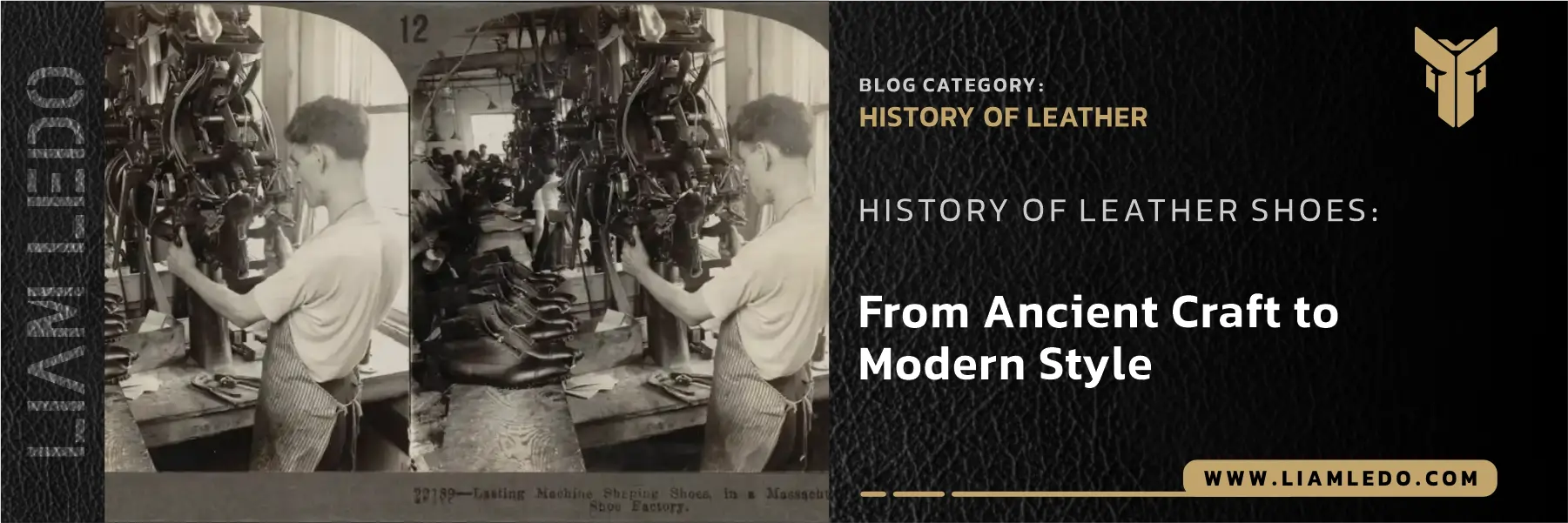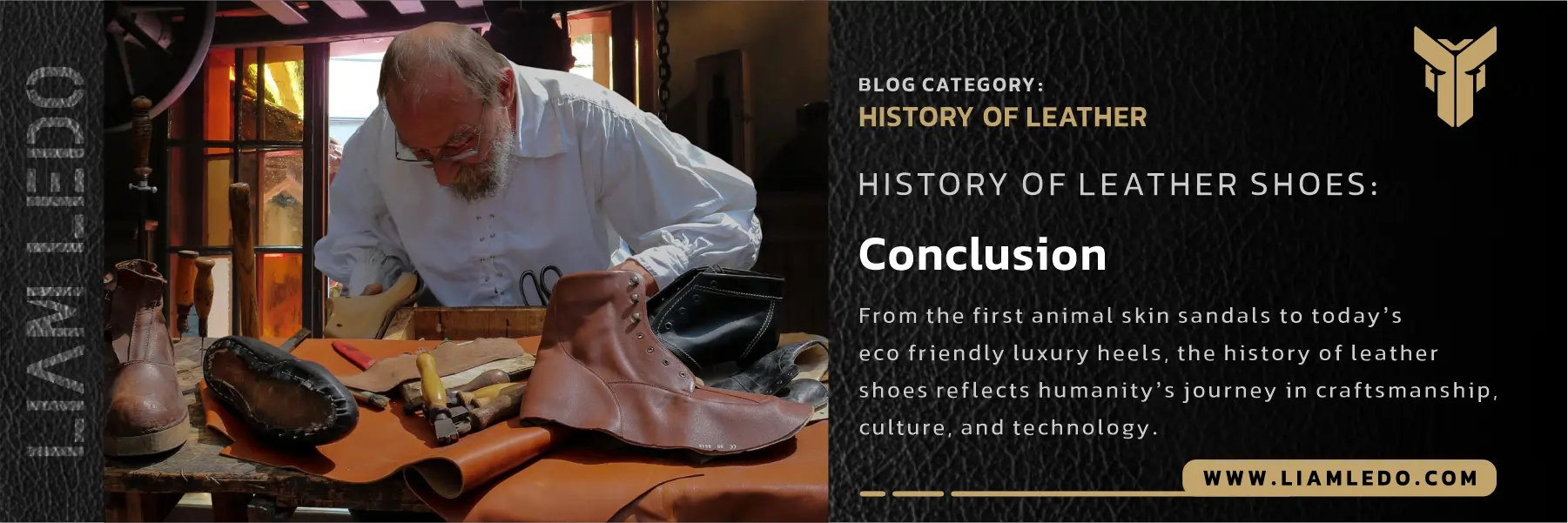
Leather shoes have always been more than just a way to protect our feet. The history of leather shoes spans thousands of years and reflects human craftsmanship, culture, and technological progress. From the primitive use of animal hides to today’s luxury and eco-friendly designs, leather footwear has been a constant companion in our journey. This article explores the fascinating evolution of leather shoes, their cultural importance, and how craftsmanship has kept them relevant in every era, while also adapting to modern demands for comfort and sustainability.
Learn more about leather and make better choices:
1.Ancient Origins of Leather Footwear:
During the Middle Ages, the demand for handmade leather shoes grew across Europe. Shoemakers incorporated features like laces, pointed toes, and decorative stitching. Footwear was not just for protection but also a social statement—nobles wore luxurious, intricately made shoes, while common folk opted for simpler, durable designs.
The leather shoe craftsmanship of this period reflected regional styles. For instance, soft leather slippers were popular in the Middle East, while Europe saw the rise of heeled leather boots. Owning high quality leather shoes was often a sign of economic power and social prestige.
2.The Renaissance: Art Meets Footwear
By the Renaissance, leather shoes had transformed into works of art. Shoemakers devoted more attention to detail, adding embroidery, metal accents, and unique heel shapes. Luxury leather shoes became a standard for the elite, made from the finest leathers and decorated by skilled artisans.
This era also marked a shift toward personalization. Different shoe styles signified different occasions—formal banquets, travel, and daily wear each had their own designs. The refinement in production techniques made Renaissance footwear both beautiful and functional.
3.The Industrial Revolution: Mass Production of Leather Footwear
The Industrial Revolution in the 19th century revolutionized the leather shoe making process. Machinery replaced most manual steps, allowing mass production at unprecedented speed. While handmade shoes still existed for the wealthy, factory produced footwear became accessible to the general public.
Mechanization also improved precision in cutting, stitching, and molding leather. As a result, designs diversified—formal leather shoes, work boots, and even more comfortable styles appeared on the market. For the first time in history, high quality leather footwear was no longer a privilege of the rich.
4.Leather Shoes in the 20th Century:
The 20th century brought style diversity to the history of leather shoes. Innovations in tanning technology made leather softer, more durable, and available in various colors. The introduction of best leather shoes for men and best leather shoes for women as product categories shaped the global fashion industry.
This period saw the rise of casual and sports leather shoes alongside traditional formal wear. The fashion world embraced versatility, offering designs to suit daily wear as well as special events. Synthetic leathers also entered the market, providing lower cost alternatives.
5.Modern Trends and Future of Leather Footwear:
Today’s leather footwear industry blends tradition with innovation. Many brands still value handmade leather shoes, appreciating their craftsmanship and exclusivity, while others focus on sustainable materials. Eco friendly, plant based, or recycled leathers are increasingly popular, meeting rising environmental standards.
Modern consumers can choose from a wide range of designs—luxury leather shoes for formal settings, rugged boots for outdoor use, and stylish sneakers for everyday wear. This diversity ensures that leather shoes remain relevant in fashion and function.
6.Cultural Significance of Leather Shoes:
Throughout history, leather footwear has been a symbol of social standing. In earlier times, owning finely crafted shoes meant wealth and influence. Even today, well made vintage leather shoes or bespoke pairs convey elegance and taste.
The appeal of leather lies not just in looks but also in its long life. Many still associate leather shoes with reliability, professionalism, and refined style, making them essential for work, formal events, and ceremonies.
7.How to Choose the Best Leather Shoes:
If you’re looking to invest in high quality footwear, here are some tips:
- Know the Leather Type – Full grain leather is the most durable and ages beautifully; top grain offers a smoother, more refined look.
- Check Stitching and Craftsmanship – A well made shoe should have even stitches and solid soles.
- Fit Matters – Comfort should be just as important as style; a good fit prolongs shoe life.
- Match to Occasion – Keep best leather shoes for men and best leather shoes for women in separate contexts—Oxfords for formal, loafers for semi casual, sneakers for relaxed wear.

Conclusion:
From the first animal skin sandals to today’s eco friendly luxury heels, the history of leather shoes reflects humanity’s journey in craftsmanship, culture, and technology. Each era added its mark—be it the elegance of the Renaissance, the innovation of the Industrial Revolution, or the sustainability focus of modern design.
Whether you prefer handmade leather shoes crafted by skilled artisans or opt for cutting-edge materials, one thing remains clear: leather shoes are not just footwear; they are a timeless statement of style, culture, and human achievement, carrying forward a legacy that blends tradition with innovation.
Source: The Gentleman’s Gazette | Wikipedia






